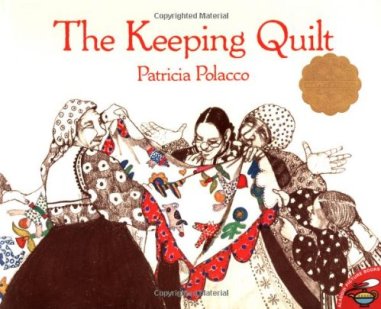I always love the opportunity to make another #booklist because it helps me catch up on my Goodreads indexing — not to mention the fact that it helps me think about which books really draw me in and why. So I appreciate this pass-it-forward invitation via Norah Colvin. Thanks Norah!
For those I nominate that want to join in, here are the “rules:”
- Thank whoever’s nominated you and share their blog link.
- Let us know your top 5 children’s books
- Nominate 5 people to do the same
- Let your nominees know you nominated them
I can’t make a top 5 list of children’s books without it being from a pretty specific category to narrow it down! So I’m going to choose from junior fiction. That I’ve read this year. That I would consider as classroom read aloud material. These were the ones that I couldn’t put down — that I carried upstairs and downstairs and in my diaper bag and on my nightstand, all in the hopes of catching another few pages. I hope you enjoy them as well (P.S. You’ve probably noticed a genre trend here–I promise I did check out many realistic fictions, but for whatever, reason, they weren’t doing it for me this year. Mystery all the way in 2017!)
Incorrigible Children by Maryrose Wood: I am dying for the next book in the Incorrible Children series! As much as I love following the story of the 3 children raised by wolves that are now brought up by their plucky young governess Penelope Lumley, I think I might enjoy Wood’s Lemony-Snickett-like narrative asides just as much.

Nooks & Crannies by Jessica Lawson: If you loved Roald Dahl’s books growing up, or even just possessed a vague inclination, this one is worth checking out. In a Matilda-meets-Charlie & the Chocolate Factory story, Tabitha Crum, along with 4 other children, is invited to the home of a fabulously wealthy Countess for an important announcement. She is quickly swept up in a mystery as children start disappearing and the Countess doesn’t seem what she appears.

The Girl Who Drank the Moon by Kelly Barnhill: Breath-taking. I loved the poetry and flow, and I never wanted it to end. From Goodreads: “One year, Xan accidentally feeds a baby moonlight instead of starlight, filling the ordinary child with extraordinary magic…An epic coming-of-age fairy tale.”

The Detective’s Assistant by Kate Hannigan: Ok, this one definitely merges some historical fiction in with the mystery! I enjoyed the character development and interactions as Nell works to prove herself to be of use to her Aunt Kate when she is brought to her doorstep. This assistance eventually builds from chores to real-life detective work to assist Aunt Kate’s work with the Pinkerton Detective Agency.

The Boundless by Kenneth Oppel: I was introduced to Oppel’s work this year and loved it all (The Nest and Every Hidden Thing also topped my lists this year, but neither one would probably be suitable as elementary read alouds–intensity in The Nest and some mature content in Every Hidden Thing). The Boundless will make for a gripping read-aloud as Will Everett must keep ahead of a deadly plot while working his way up the Boundless train!

5 bloggers nominated to add their 5!
Pernille Ripp: Many of my library book holds are because of Pernille’s advice! An English teacher in Wisconsin, she’s always pushing the status quo on reading and writing instruction.
Faige Meller: Though retired from her own kindergarten classroom, Faige’s work in influencing children is far from finished! She often writes about her work as a substitute children and about how we can better connect with our students–and one of my daughter’s new favorite reads (Roxaboxen) came from her recommendation.
Man-Cub Mamas: On the #TeacherMom spectrum, this blog is definitely more on the Mom side, with all sorts of tips at home. My favorite, of course, as been the book recommendations, supplied by a good friend of mine, which is why I’m adding the nomination here!
LitLife Blog: The literary connection of this blog is clear in the title, and I am a huge fan of Pam Allyn’s work. I haven’t heard from them on that platform for a while now, but perhaps this nomination might invite a new book list? 🙂
Library Girl: I am so impressed by her work with the #30SecondBookTalks and World Book Talk Competition. Jennifer LeGarde is passionate about creating cultures of reading.
featured image: DeathToTheStockPhoto
























